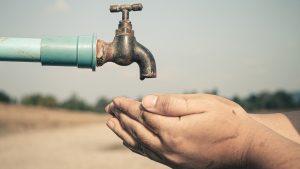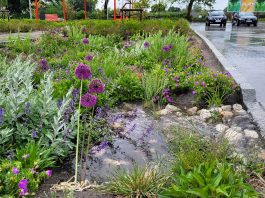A new study has found that relying on water storage will not be enough to compensate for declines in future water availability in western agricultural communities.
Western agricultural communities in the US are heavily reliant on mountain snowpacks and their gradual melt for water storage and supply, and climate change is expected to upend the reliability of this natural process.
Many communities in this part of the country are examining ways to adapt to a future with less water.
The research shows that supplementing the water supply by expanding reservoir capacity will not be enough to avert future water crises.
How climate change is affecting water supply
Water management systems were designed to store winter precipitation and release it downstream during drier months.
However, climate change is altering snowmelt patterns in ways that will make it difficult for existing systems to meet the needs of downstream water users.
As the world’s largest user of freshwater, western agriculture is at particularly high risk from these changes.

In contrast, water conservation strategies such as reducing total crop acreage, periodic crop fallowing, and shifting toward higher-value crops can help manage these risks.
Water conservation strategies can help restore capacity in agricultural communities
By identifying agricultural communities considered at risk from looming changes in snowfall and snowmelt patterns, the researchers found that water conservation measures like changes in crop type and extent were more stable adaptive strategies than changes to reservoir capacity.
By the end of the century, many areas could have less than half the water they have historically relied on to refill their reservoirs, but changing the types and extent of their crops could help by restoring an average of about 20% of reservoir capacity.
The research team included scientists with the diversity of expertise needed to capture the complexities of water systems while balancing concerns for locally focused adaptation.
“A lot of decisions about water are made at the local level, but there’s this big disconnect between that reality and the macro-scale level of most research on this topic,” explained Beatrice Gordon, who led the study.
“We really wanted to understand what the future could look like at the scale that most agricultural communities manage their water resources.”
Building a risk assessment framework
To find out how risk management practices could work on a community-level scale, the researchers built a comprehensive risk assessment framework based on guidance from the Intergovernmental Panel on Climate Change (IPCC).
They gathered historical data on irrigation water supply, agricultural water demand, snow storage and snowmelt patterns, and more for each of the 13 communities.
They then used projections for the future climate through 2100 to understand how supply and demand dynamics may change in the near future.
The researchers selected western agricultural communities located in headwaters areas, making them both subject to significant changes in future climate and sentinels for the future of the West.
Several are located in the Upper Colorado River Basin, which feeds into the river’s main stem—a water system that supports more than 40 million people.
“A lot of these areas are providing downstream water to other communities,” Gordon said. “So, if they have an increase in demand and a decrease in supply, it impacts not only that area but also the areas that rely on that water downstream.”
The study results show that there will be a stark decline in how much many of these communities will be able to refill their reservoirs in just a few decades, with some seeing declines to about half of the water they were historically able to store.





